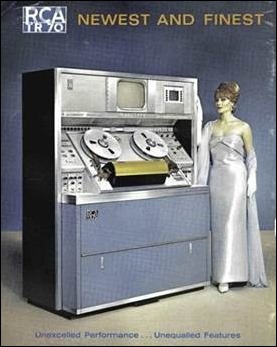Curbside Consult with Dr. Jayne 3/8/21
The Washington Post ran a piece this week on Zoom fatigue. It brings up some good questions about whether calls really need to have a video component and links to a paper on the topic titled “Nonverbal Overload: A Theoretical Argument for the Causes of Zoom Fatigue.”
The author, Jeremy Bailenson, PhD, is a professor and founding director of Stanford University’s Virtual Human Interaction Lab. He concludes that there are four major causes of videoconferencing fatigue:
- Excessive direct eye gaze as people look at faces close up rather than at notes or other places in the room.
- Increased cognitive load interpreting nonverbal behaviors.
- Constant self-evaluation from seeing ourselves in real time.
- Reduced mobility for those used to walking and talking on phone calls or in person,
Bailenson recommends use of the “hide self” view and minimizing the video call screen as potential solutions. He also recommends that meeting hosts specifically ask attendees to look around their environments and move around as they would in an in-person meeting.
Another paper from Andrew Bennett, PhD, assistant professional of management at Old Dominion University, is pending publication in the Journal of Applied Psychology. It offers some specific suggestions for reducing videoconference fatigue:
- Hold meetings earlier in the work period.
- Enhance perceptions of group belongingness.
- Mute if not speaking.
- Take breaks from looking at the screen, both during and between conferences.
- Establish group norms for mute, camera, acceptability of multitasking, hand raising, etc.
Interestingly, Bennett’s research found inconclusive evidence for changes in webcam usage or using the “hide self” view.
Other potential solutions to videoconference fatigue might be to do calls as audio only. Those of us who have been videoconferencing for years have already been through this and created solutions.
At some companies, the first few minutes of a call includes video so that everyone can see each other and have a time of relationship building with a little bit of chit-chat. Then cameras go off as the meeting gets underway. I like that approach personally because I take a lot of notes during meetings and people sometimes find my downward gaze to look like inattention. I’m still a pen-and-paper girl for many of my notes because I find it helps me remember content better. I also like to keep my microphone live all the time so that I don’t forget to unmute before speaking. I have a quiet work environment so this generally works, and my pen makes far less noise than my clacking keyboard would.
I personally find Zoom calls to be fatiguing only when dealing with individuals who haven’t figured out how to effectively use the system. We’re a year into this pandemic and if you don’t know where the mute button lives by now, I really feel for you. This sentiment is found in numerous comments on the Washington Post article, along with other positive impacts of remote work including decreased commuting time and expenses. I was also annoyed with a recent Zoom call that I knew was going to be audio-only when it wouldn’t let me in because I tried to access it on a computer that doesn’t have a webcam. I don’t know if that’s a setting on the host side since usually I just use my laptop, but it resulted in some last-minute scrambling.
I might be in the minority, but I find the use of Zoom backgrounds to be distracting, especially when there is a lot of bleed-through or issues with people moving around a lot and having parts of their body disappear. If you’re a fan of backgrounds, I definitely recommend investing in a green screen so you can get the best performance out of the system. Otherwise, I would recommend trying to find a calm corner to customize for when video is needed or considering something like a folding screen to provide a neutral background.
I am on far too many calls where people have children and pets running around in the background, and that’s definitely distracting. I once terminated a call when I dialed in to find my coworker sitting by her pool with her children in it. She said she didn’t want them to be in the pool without her, but thought it was OK to be on a call. I’m a firm believer that if you’re supposed to be supervising your kids in the pool, you had better be giving them your full attention. She disagreed, but I certainly didn’t need to enable her dangerous behavior.
Another angle on Zoom fatigue is to make sure that you are leveraging the leisure time benefits of videoconferencing as well as the work-related ones. I have monthly happy hours with people all across the country that wouldn’t be as much fun if we were only on the phone. It helps establish the role of videoconferencing in building relationships and not just driving one crazy. I’m about to embark on a trip with one of my video happy hour friends, and if our conversations are any indicator, it should be a doozy of an adventure. Without building a friendship on video, we might not have even thought about this since our previous interactions were mostly built on emails about cute shoes and boots.
Zoom has also allowed me to continue to take music lessons despite the pandemic. I previously studied in my instructor’s home, and since she has an elderly relative in the household, she stopped in-person lessons fairly early in the pandemic. I was happy to avoid the 90-minute round trip commute. Although Zoom isn’t perfect, the platform has made some significant enhancements to allow it to better handle events such as music lessons. The “original sound” feature has been enhanced, along with other audio settings, to allow a truer audio representation. My only issue with it is that I can’t seem to default it on, so sometimes I forget to turn it on for every lesson. As an adult beginner on this particular instrument, I was definitely less anxious about playing my first recital via Zoom than I would have been had I been in an auditorium with my 5- to 9-year-old peers.
What do you think about the idea of Zoom fatigue? Leave a comment or email me.

Email Dr. Jayne.
















The sentence was "most people just go to Epic UGM" - that's people going to Epic's annual user conference and…